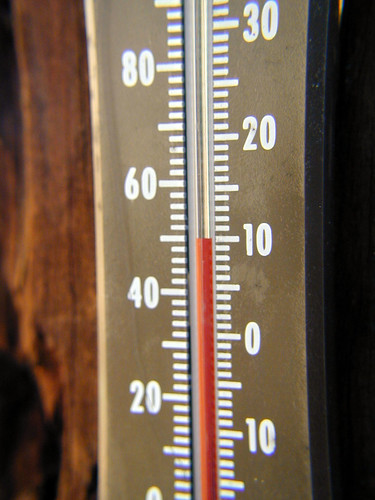After about a month straight of temperatures below 20 degrees, and probably half of those below 10 degrees, imagine our surprise when the temperatures in Lake Placid jumped about 30 degrees over the course of a day!
A general rule of thumb is when the temperatures are cold, the ice on the track is harder, and so the track is faster. While this isn't set in stone all the time, for the most part, cold weather = fast track.
So, flip-flopping that, if the weather is warm, the track may not be so hard, so may not be as fast. Warm weather can cause frost, or even slush to settle on the track, making it tough to go fast.
Once again, this is not a 100% theory. During a big competition, such as World Cup or ICC or National Championships, the ice workers will be at the track 23 hours of the day, maintaining the ice enough to keep it hard and fast.
It was our luck that just as the weather warmed up, an ammonia pump on the track's cooling system failed, causing all the ice from Curve 1 up to be at Mother Nature's mercy.
 This isn't the thermometer at the track, but it shows the temperature from sliding November 17.
This isn't the thermometer at the track, but it shows the temperature from sliding November 17.
Thursday siding turned out very interesting. The ice at the top (so the start and into Curve 1) was sludgy, and got worse as the session went on, while the ice on the remaining parts of the track was faster than the day before.
There are so many things that affect the ice conditions, and I'm still learning so please forgive me if I ramble off into track jargon! (I was already accused of that a few times in this blog!)
 Lake Placid Cup Series Race start
Lake Placid Cup Series Race start
Because of the ice conditions on Thursday and the warm temperatures Thursday night, Don moved our Friday race to Start 3. This is where the luge athletes start on the track, and its start empties into Curve 4. Because it is lower on the track, the speeds are slower, and the lines one takes on the track are different.
Added on the slower speeds to begin with was a layer of frost covering most of the lower track. A run from Start 3 that usually takes 43-47 seconds was taking athletes 55 seconds to a minute. Even someone who doesn't understand skeleton lingo can see that is pretty slow.
The athletes had fun with it, though. It was low-key, with lots of laughter, costumes, and even an interesting method of starting. Since the luge start is very steep and luge athletes start with their hands, it isn't a great place for skeleton athletes to start, since we sprint and then jump on the sled.
Some of the guys figured out that if we attached stretch bands to the start consuls of the luge start, we could slingshot a skeleton athlete off the start.
Needless to say, it didn't work. But it was still fun.
 Mike in an outfit not usually seen in a sliding sport!
Mike in an outfit not usually seen in a sliding sport!
It was interesting to go from trying to drive to the right lines on the track to this race, where really the best thing to do was to lay on the sled and relax. It was a good time to practice form and relaxation, which is what I tried to do on my two runs.
Today marks two weeks until National Championships! I'm nervous to slide with these great athletes who have been training for years. Some of them have gone to the Olympics, and many have won World Cup and other Cup medals. But I'm anxious to show what I can do, and I feel much more confident in my abilities now than I did a month ago.
I feel confident in my sled, though I just got weight moved (again) to help me go even faster. I also feel confident in my strength, though I'm also excited for the summer to gain back muscle that I've likely lost during the season.
All-in-all, I'm ready to show what I can do, and I'm excited to learn even more.
Thank you to everyone who has helped me financially thus far. If you or anyone you know would like to sponsor a budding skeleton athlete training for the Olympics, please contact me at lsesalter@gmail.com!
Thank you all for continuing to read!

No comments:
Post a Comment